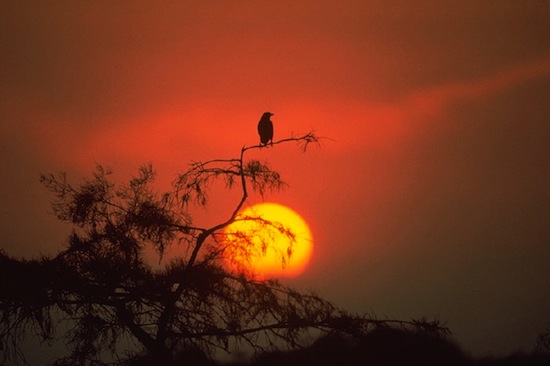Chapter 12
Biogeography of the Earth

Sunset in the Everglades
Courtesy
U.S. National Park
Service
The distribution of biotic systems is related to the variation in climate, soils, and topography on Earth. Over eons of time, plants and animals have occupied and adapted to the particular environmental conditions in which they live. The giant saguaro cactus stores water in fleshy stems to nourish itself in the hot desert, while the heavy, shaggy coat of the musk oxen helps protect it from the cold arctic wind. In this chapter you will become familiar with what affects the geographic distribution of plant and animal species.
The animation of net primary productivity below shows the net gain in chemical energy from atmospheric or aquatic carbon dioxide. Highly productive regions are dark green, less productive light brown. Watch the animation by clicking the play button and describe what you see.
Seasonal Changes in Net Primary Productivity
Courtesy: NASA Earth Observatory (Source)
The most productive regions appear through the tropics, while the subtropics show very low productivity. The region of high net productivity shifts north and south through the year. Why does this spatial and temporal pattern in net primary productivity occur and what are the implications? Will this pattern change in the future?
Learning Outcomes:
By the end of the chapter you should be able to:
- Compare and contrast ecology and biogeography
- Describe habitat and niche and how they relate to one another.
- Explain how habitats are occupied by plants and animals.
- Describe the processes of photosynthesis, transpiration, and respiration.
- Define net biomass productivity and how it relates to climate, soils and nutrient availability.
- Define succession and describe how succession occurs in terrestrial ecosystems.
- Describe the first and second laws of thermodynamics and how they relate to trophic levels and food chains.
- Explain how plants have adapted to light and moisture availability
You may view a list of chapter topics by clicking the "Topic Outline" link or go directly to the first topic by clicking "Continue".
Previous | Topic Outline | Continue
